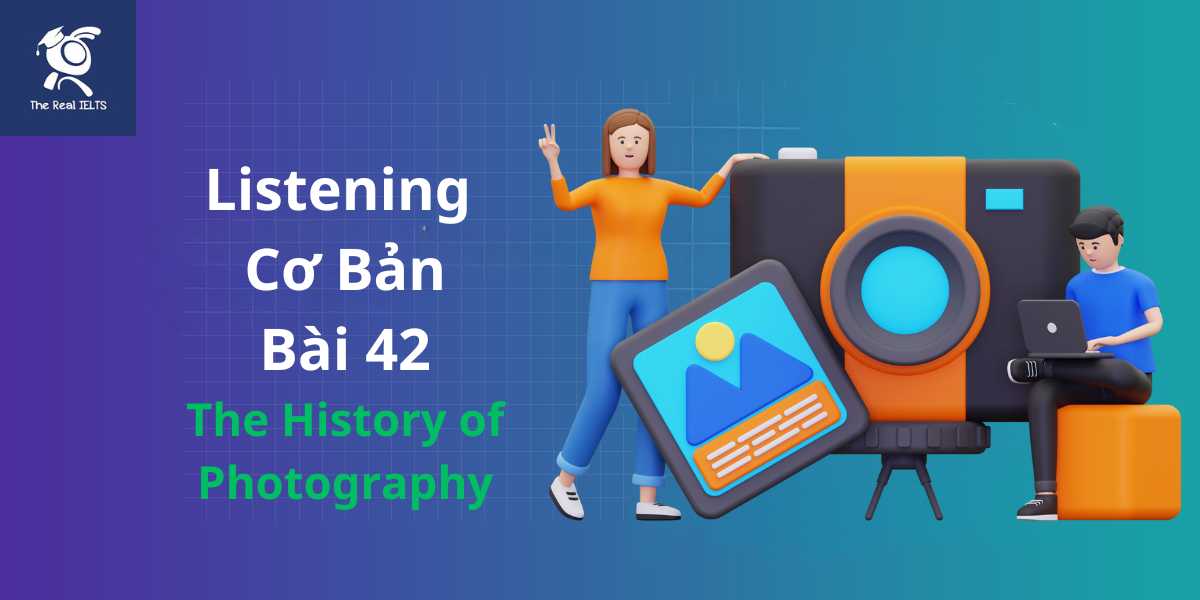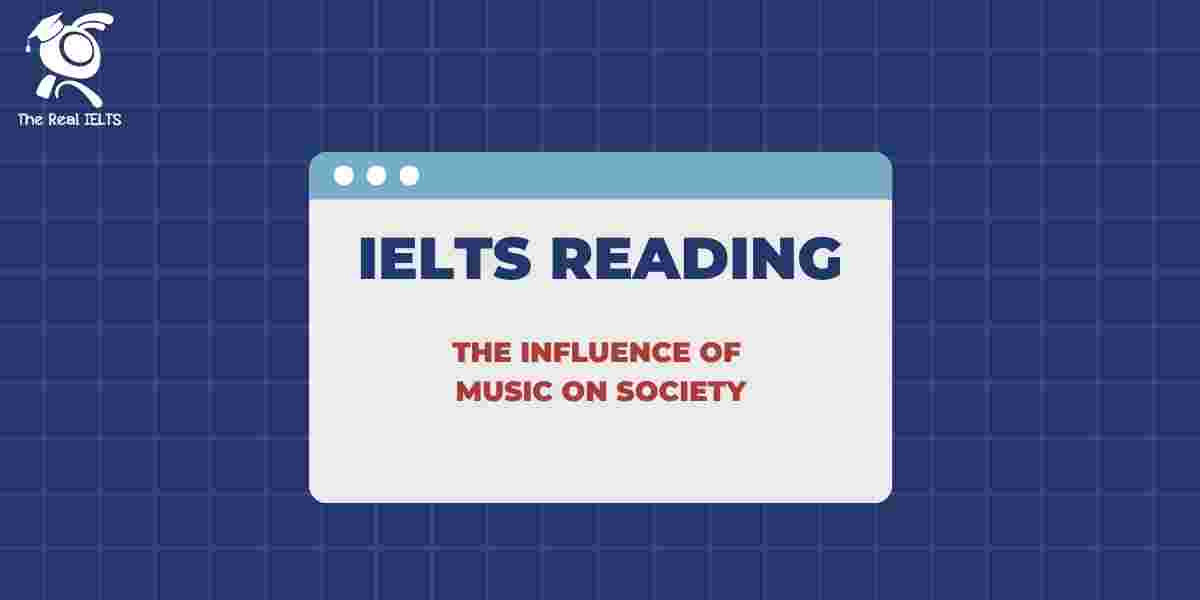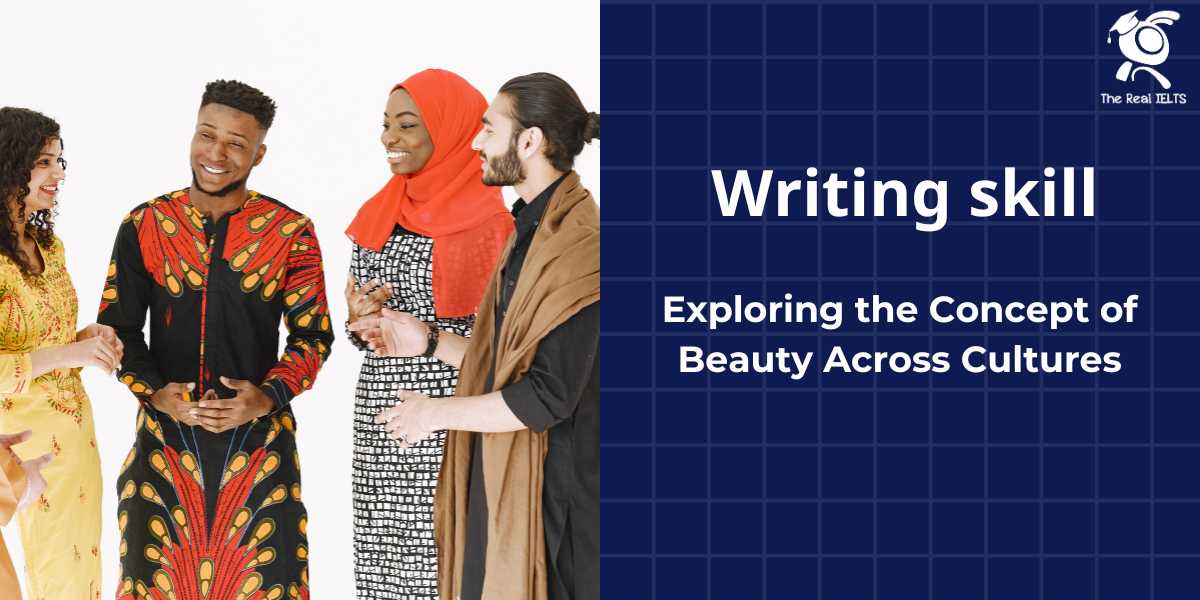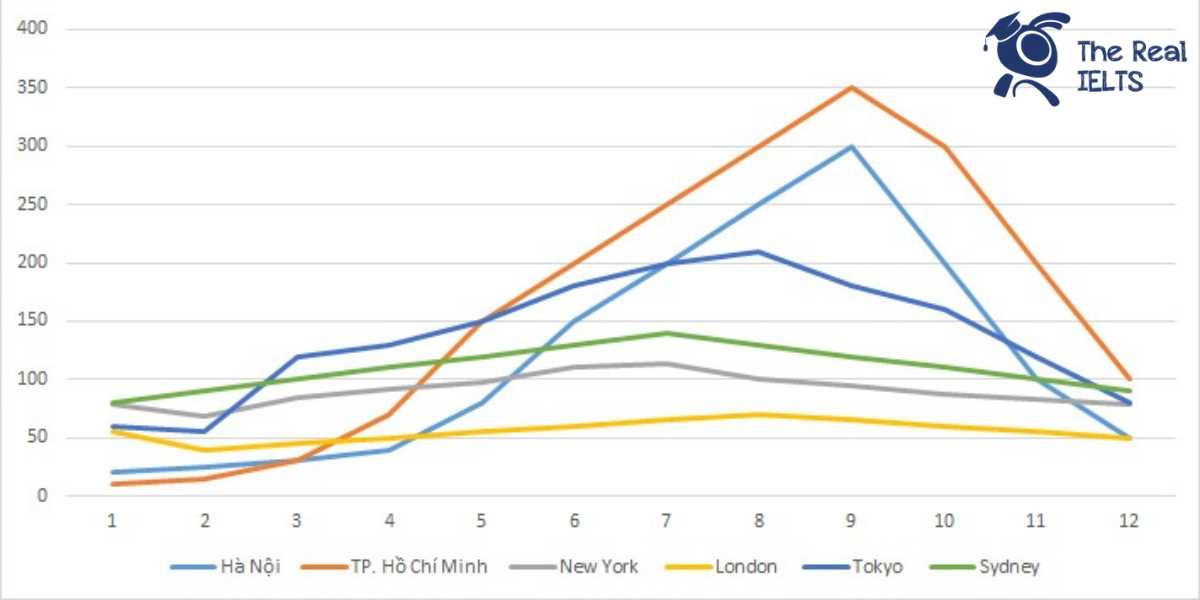Lịch sử ngành nhiếp ảnh đã có hơn 100 năm. Bài Listening lần này có chủ đề về nhiếp ảnh. Đây là một trong những chủ đề có tính truyền thống khi đề thi nhiều khi luôn đề cập đến lịch sử về một vấn đề gì đó.
Bài Listening
Questions
Section 1: Multiple Choice
- What was the significant contribution of Joseph Nicéphore Niépce to photography?
- A. He invented the daguerreotype.
- B. He created the first successful photograph.
- C. He introduced the gelatin dry plate.
- D. He developed the collodion process.
- How did the daguerreotype improve upon Niépce’s heliograph?
- A. It allowed for color photographs.
- B. It produced clearer images and had a shorter exposure time.
- C. It eliminated the need for mercury fumes.
- D. It used a flexible film.
- Who introduced the collodion process?
- A. Joseph Nicéphore Niépce
- B. Louis Daguerre
- C. Frederick Scott Archer
- D. George Eastman
- What was a major benefit of the gelatin dry plate?
- A. It allowed for color photography.
- B. It made photography more accessible and practical.
- C. It introduced digital photography.
- D. It reduced exposure times to a few seconds.
- Which innovation is George Eastman known for?
- A. Developing the heliograph.
- B. Introducing the collodion process.
- C. Producing the first flexible film and Kodak cameras.
- D. Creating the first digital camera.
Section 2: Fill in the Blanks
Photography, as we know it today, has undergone several significant transformations since its inception in the early 19th century. The first successful photograph, known as a __________, was created by French inventor Joseph Nicéphore Niépce in 1826. Niépce’s method required an exposure time of about __________.
In 1839, Louis Daguerre, another French inventor, developed the __________, which significantly reduced the exposure time to less than __________ and produced much clearer images. This invention marked the birth of practical photography. The process involved treating a silver-plated copper sheet with iodine vapors to make it light-sensitive, then exposing it in a camera and developing it with __________ fumes.
By the 1850s, photography evolved further with the introduction of the __________ by Frederick Scott Archer. This method drastically shortened exposure times to just a few seconds and allowed for __________ of an image to be made.
The next major milestone came with the invention of the __________ in the 1870s, which eliminated the need for photographers to prepare their plates immediately before taking a picture. This innovation made photography more __________ and __________ for the masses.
Moving into the 20th century, the development of film and the introduction of __________ opened up new possibilities. George Eastman, the founder of Kodak, revolutionized photography by producing the first __________ and making photography available to the general public with his easy-to-use Kodak cameras.
Today, __________ dominates, allowing for instant image capture, editing, and sharing. The transition from film to digital technology has transformed photography into an integral part of everyday life.
Answers
Section 1: Multiple Choice
- B. He created the first successful photograph.
- B. It produced clearer images and had a shorter exposure time.
- C. Frederick Scott Archer
- B. It made photography more accessible and practical.
- C. Producing the first flexible film and Kodak cameras.
Section 2: Fill in the Blanks
- heliograph
- eight hours
- daguerreotype
- 30 minutes
- mercury
- collodion process
- multiple copies
- gelatin dry plate
- accessible
- practical
- color photography
- flexible film
- digital photography
Audio Script
Section 1: Multiple Choice
Photography, as we know it today, has undergone several significant transformations since its inception in the early 19th century. The first successful photograph, known as a heliograph, was created by French inventor Joseph Nicéphore Niépce in 1826. Niépce’s method required an exposure time of about eight hours.
In 1839, Louis Daguerre, another French inventor, developed the daguerreotype, which significantly reduced the exposure time to less than 30 minutes and produced much clearer images. This invention marked the birth of practical photography. The process involved treating a silver-plated copper sheet with iodine vapors to make it light-sensitive, then exposing it in a camera and developing it with mercury fumes.
By the 1850s, photography evolved further with the introduction of the collodion process by Frederick Scott Archer. This method drastically shortened exposure times to just a few seconds and allowed for multiple copies of an image to be made.
The next major milestone came with the invention of the gelatin dry plate in the 1870s, which eliminated the need for photographers to prepare their plates immediately before taking a picture. This innovation made photography more accessible and practical for the masses.
Moving into the 20th century, the development of film and the introduction of color photography opened up new possibilities. George Eastman, the founder of Kodak, revolutionized photography by producing the first flexible film and making photography available to the general public with his easy-to-use Kodak cameras.
Today, digital photography dominates, allowing for instant image capture, editing, and sharing. The transition from film to digital technology has transformed photography into an integral part of everyday life.
Section 2: Fill in the Blanks
Photography, as we know it today, has undergone several significant transformations since its inception in the early 19th century. The first successful photograph, known as a heliograph, was created by French inventor Joseph Nicéphore Niépce in 1826. Niépce’s method required an exposure time of about eight hours.
In 1839, Louis Daguerre, another French inventor, developed the daguerreotype, which significantly reduced the exposure time to less than 30 minutes and produced much clearer images. This invention marked the birth of practical photography. The process involved treating a silver-plated copper sheet with iodine vapors to make it light-sensitive, then exposing it in a camera and developing it with mercury fumes.
By the 1850s, photography evolved further with the introduction of the collodion process by Frederick Scott Archer. This method drastically shortened exposure times to just a few seconds and allowed for multiple copies of an image to be made.
The next major milestone came with the invention of the gelatin dry plate.In the 1870s, which eliminated the need for photographers to prepare their plates immediately before taking a picture. This innovation made photography more accessible and practical for the masses.
Moving into the 20th century, the development of film and the introduction of color photography opened up new possibilities. George Eastman, the founder of Kodak, revolutionized photography by producing the first flexible film and making photography available to the general public with his easy-to-use Kodak cameras.
Today, digital photography dominates, allowing for instant image capture, editing, and sharing. The transition from film to digital technology has transformed photography into an integral part of everyday life.
Học lại bài cũ: Bài tập Listening 41: Traditional Festivals Around the World.















